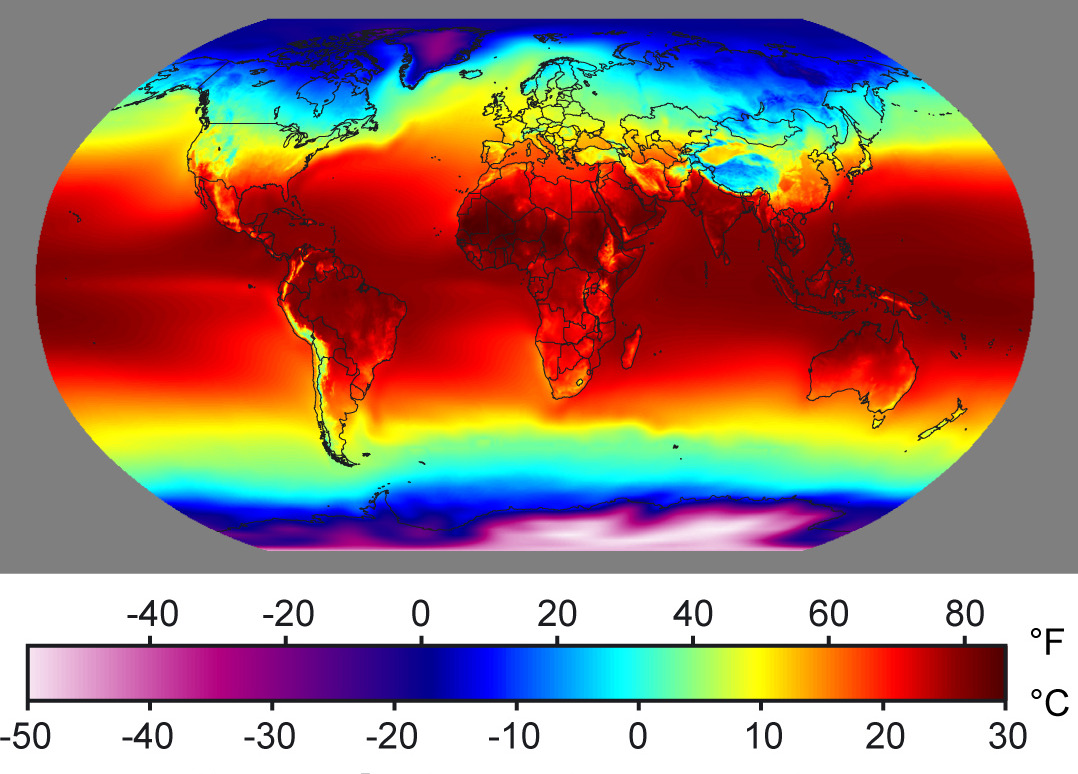10.4 Factors that influence climatic conditions
The areas of planet Earth can be divided into various geographical zones in terms of their climates. The borders of these geographical zones loosely follow the planet's latitudes.
The regions closest to the North and South poles comprise the planet's frigid zones. When moving towards the equator from these areas, the temperate and subtropical zones are reached. The tropical or torrid zone is located near the equator.
The planet's geographical zones.
The borders of the planet's geographical zones do not follow the latitudes compeletely. This is caused by the fact that many regional factors influence the climates of different areas. Such factors include winds, ocean currents, distance from the sea and topography. Winds move air from one place to another and cause movement in surface waters. Closeness to the sea evens out temperature variation between summer and winter, as the water of the sea cools down at a slower rate than the surface of the planet.
Average temperatures of different cities in February. The warming effect of the sea and its currents are shown in the average temperatures of Vancouver and Glasgow.
Areas of high elevation, such as mountain ranges, can belong to a colder climatic regions than other areas of the same latitude.

When climbing a mountain, the air temperature decreases by approximately 0,6 degrees Celsius per each 100 meter increase in elevation. As a result, mountain peaks experience different climatic conditions than valleys do.

The map displays the variation in yearly average temperature on planet Earth. Notice that the changes in temperature are not only deterermined by latitude, but are actually the products of a multitude of factors.
The regions closest to the North and South poles comprise the planet's frigid zones. When moving towards the equator from these areas, the temperate and subtropical zones are reached. The tropical or torrid zone is located near the equator.
The planet's geographical zones.
The borders of the planet's geographical zones do not follow the latitudes compeletely. This is caused by the fact that many regional factors influence the climates of different areas. Such factors include winds, ocean currents, distance from the sea and topography. Winds move air from one place to another and cause movement in surface waters. Closeness to the sea evens out temperature variation between summer and winter, as the water of the sea cools down at a slower rate than the surface of the planet.
Average temperatures of different cities in February. The warming effect of the sea and its currents are shown in the average temperatures of Vancouver and Glasgow.
Areas of high elevation, such as mountain ranges, can belong to a colder climatic regions than other areas of the same latitude.

When climbing a mountain, the air temperature decreases by approximately 0,6 degrees Celsius per each 100 meter increase in elevation. As a result, mountain peaks experience different climatic conditions than valleys do.

The map displays the variation in yearly average temperature on planet Earth. Notice that the changes in temperature are not only deterermined by latitude, but are actually the products of a multitude of factors.